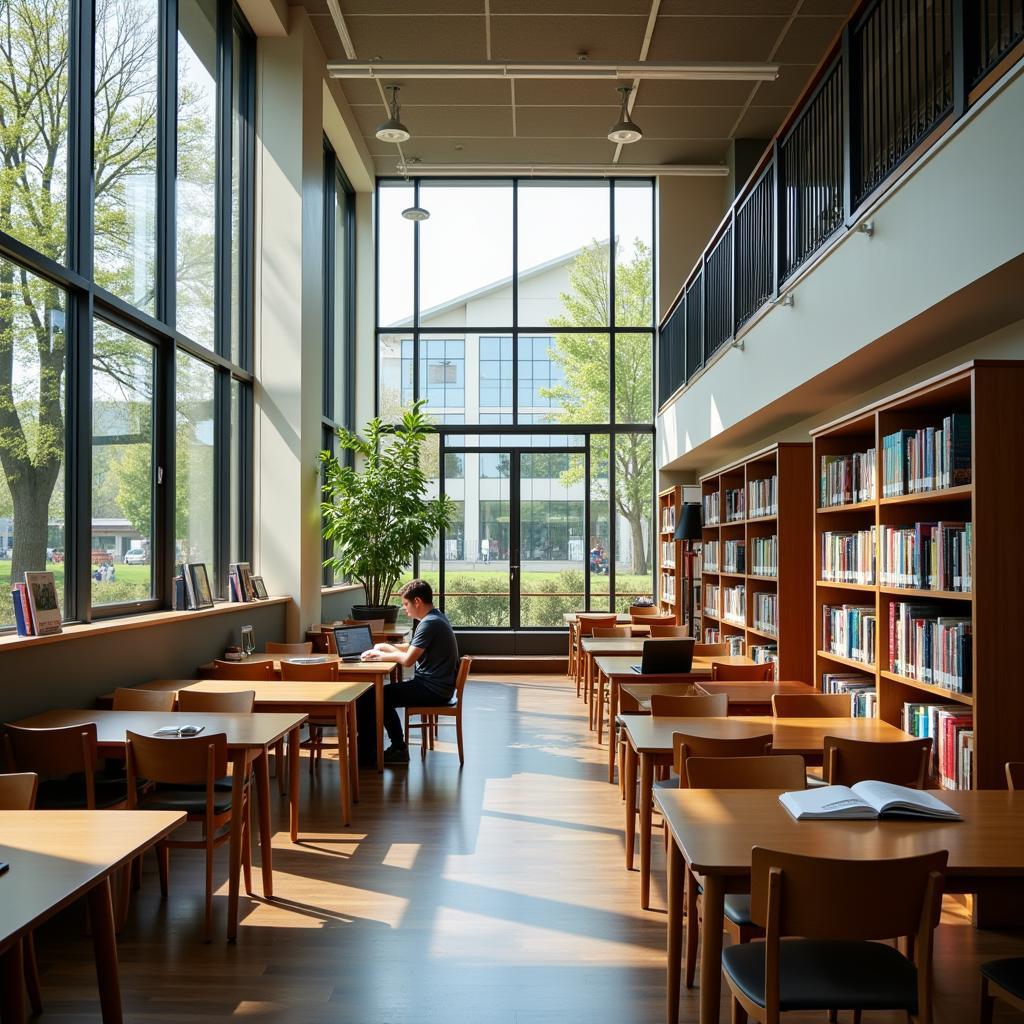When preparing for the IELTS Speaking test, being able to describe a study spot effectively is crucial, as it’s a topic that frequently appears across all parts of the speaking assessment. Let’s explore how to excel at discussing your ideal study environment, similar to how you might describe a place in your city you often visit for leisure.

Part 1: Introduction and Interview Questions
Common questions about studying environments include:
- Where do you usually study?
- Do you prefer studying alone or with others?
- What makes a good study environment for you?
Sample answer (Band 8-9):
“I predominantly study in my university’s library because it provides an optimal learning environment. The atmosphere is conducive to concentration, with its perfect blend of quietness and subtle background noise. I find that studying alone enhances my productivity, although I occasionally participate in group discussions when tackling complex subjects.”
Part 2: Cue Card
Your task is to describe an ideal study spot. You should say:
- Where it is
- What it looks like
- What facilities it has
- And explain why you think it’s ideal for studying
Sample answer (Band 8-9):
“I’d like to tell you about my perfect study haven, which is the indoor or outdoor place where I study easily. It’s a contemporary study space located on the top floor of our city’s central library. The area is meticulously designed with floor-to-ceiling windows that flood the room with natural light, creating an invigorating atmosphere for learning.
The space boasts ergonomic furniture, including adjustable chairs and spacious desks that can accommodate multiple books and laptops. What makes it truly exceptional is the range of facilities available – from high-speed Wi-Fi to individual power outlets at each desk. There are also soundproof study pods for those who need absolute silence.
I consider this spot ideal because it strikes the perfect balance between comfort and functionality. The ambient temperature is always perfectly regulated, and the acoustic design ensures minimal distraction. Moreover, its location where you like to study is strategically positioned away from the library’s main traffic areas, providing the serenity necessary for deep focus.”
Part 3: Discussion Questions
Q: How have study environments changed with technology?
A (Band 8-9): “Technology has revolutionized modern study spaces. They’ve become increasingly adaptive and versatile, incorporating elements like places where you go to meet friends regularly for group work. The integration of digital resources and traditional study methods has created hybrid learning environments that cater to diverse learning styles.”
Q: What makes a study environment ineffective?
A (Band 8-9): “Several factors can compromise a study environment’s effectiveness. Excessive noise pollution, poor ventilation, and inadequate lighting can significantly impair concentration. Additionally, places where you would like to live or work temporarily might not always provide the optimal conditions for focused study.”
Key Vocabulary and Phrases
- Conducive to (adj.) – favorable to
- Meticulously (adv.) – very carefully and precisely
- Invigorating (adj.) – making one feel strong, healthy, and full of energy
- Acoustic design (n.) – the planning of sound characteristics in a space
- Strategic positioning (n.) – careful placement for maximum advantage
Remember to practice these phrases in context and focus on natural delivery during your speaking test.